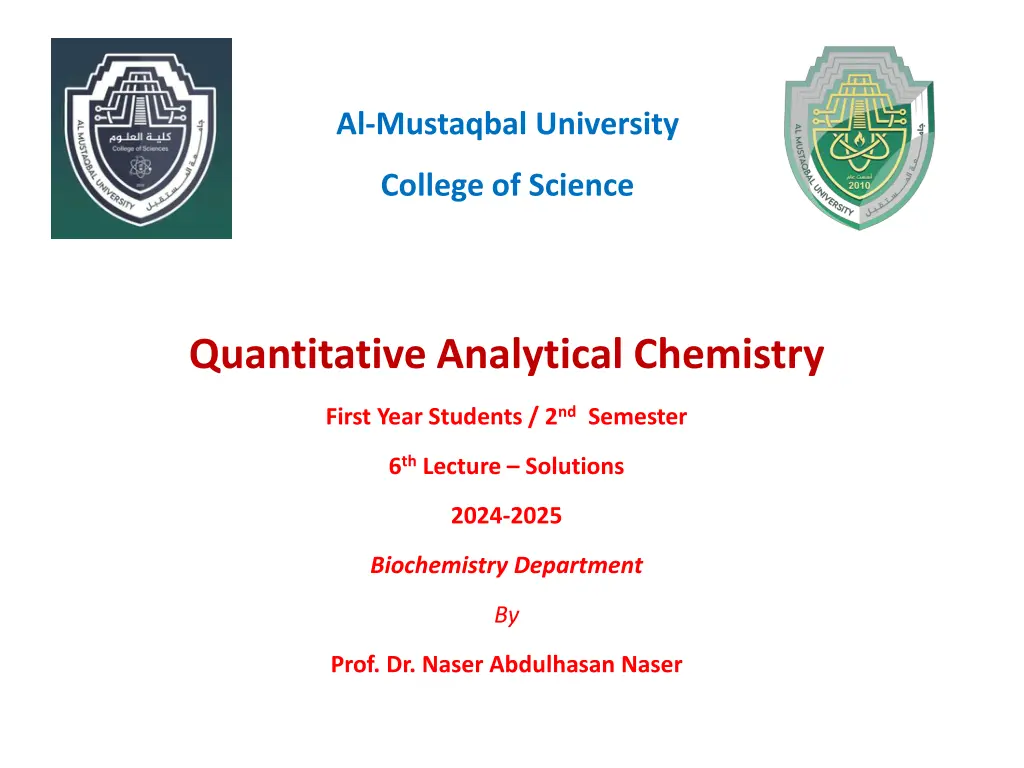
Understanding Solutions and Mixtures in Chemistry
Explore the world of solutions and mixtures in chemistry, including types of mixtures like homogeneous, heterogeneous, colloids, solutions, and suspensions. Learn about the formation of solutions, the concept of saturation, and the behavior of solvents and solutes. Dive deep into the nature of solutions through examples and images.
Download Presentation

Please find below an Image/Link to download the presentation.
The content on the website is provided AS IS for your information and personal use only. It may not be sold, licensed, or shared on other websites without obtaining consent from the author. If you encounter any issues during the download, it is possible that the publisher has removed the file from their server.
You are allowed to download the files provided on this website for personal or commercial use, subject to the condition that they are used lawfully. All files are the property of their respective owners.
The content on the website is provided AS IS for your information and personal use only. It may not be sold, licensed, or shared on other websites without obtaining consent from the author.
E N D
Presentation Transcript
Al-Mustaqbal University College of Science Quantitative Analytical Chemistry First Year Students / 2nd Semester 6th Lecture Solutions 2024-2025 Biochemistry Department By Prof. Dr. Naser Abdulhasan Naser
TYPES OFMIXTURES Mixtures Homogeneous Heterogeneous Colloids Solutions Suspensions
Solutions Solutions are homogeneous mixtures of two or more pure substances. In a solution, the solute is dispersed uniformly throughout the solvent. State of solution State of solvent State of solute Example Gas Gas Gas Air Liquid Liquid Gas Air in water Liquid Liquid Liquid Alcohol in water Liquid Liquid Salt Salt in water Solid Solid Gas Hydrogen in palladium Solid Solid Liquid Mercury in silver Solid Solid Solid Silver in gold
Formation of Solution A B C Solvent molecules attracted to surface ions Each ion is surrounded by solvent molecules The ions are solvated (surrounded by solvent)
WaterSolution Solvated water by water) are said to be hydrated ions in (surrounded Hydrated Ions ion-dipole The force here is ion-dipole intermolecular
Degree of saturation Saturated Solution 1.Solvent holds as much solute as it possible at that temperature. 2. Undissolved solid remains in flask. 3. Dissolved solute is in dynamic equilibrium with solid solute particles Unsaturated Solution 1. Less than the maximum amount of solute for that temperature is dissolved in the solvent. 2. No solid remains in flask.






















